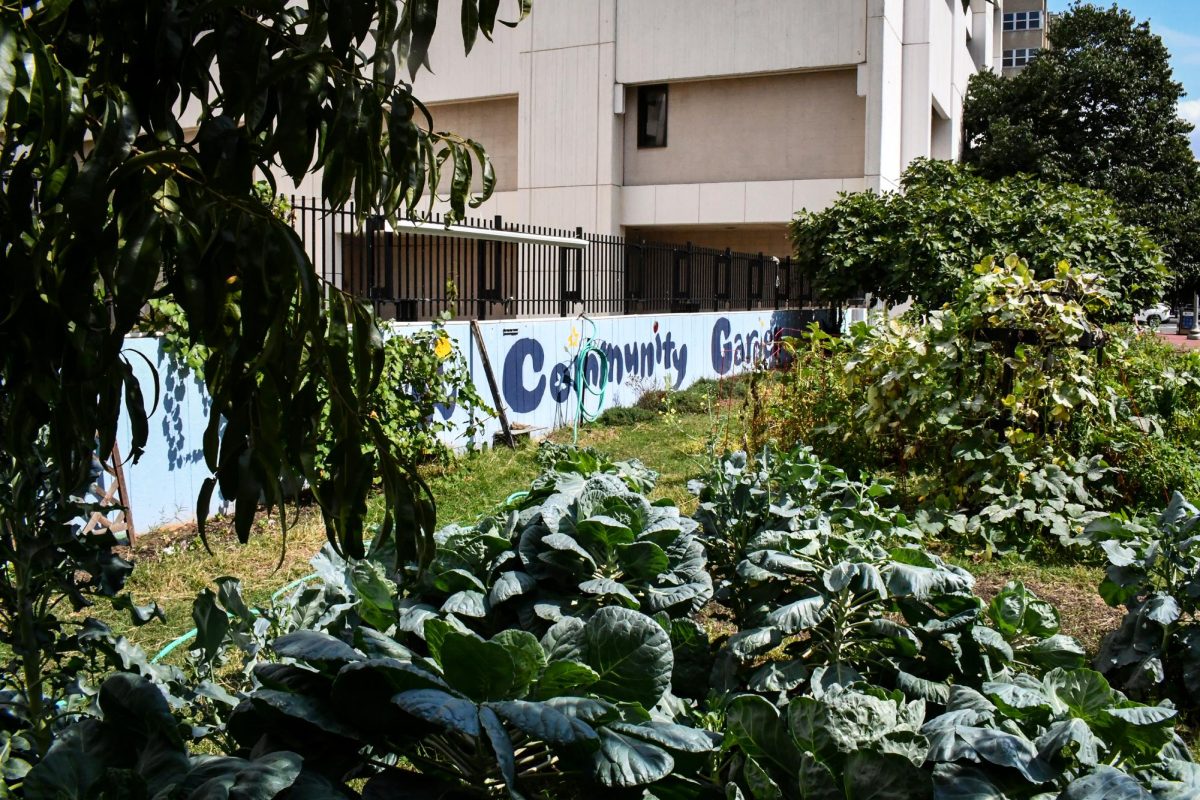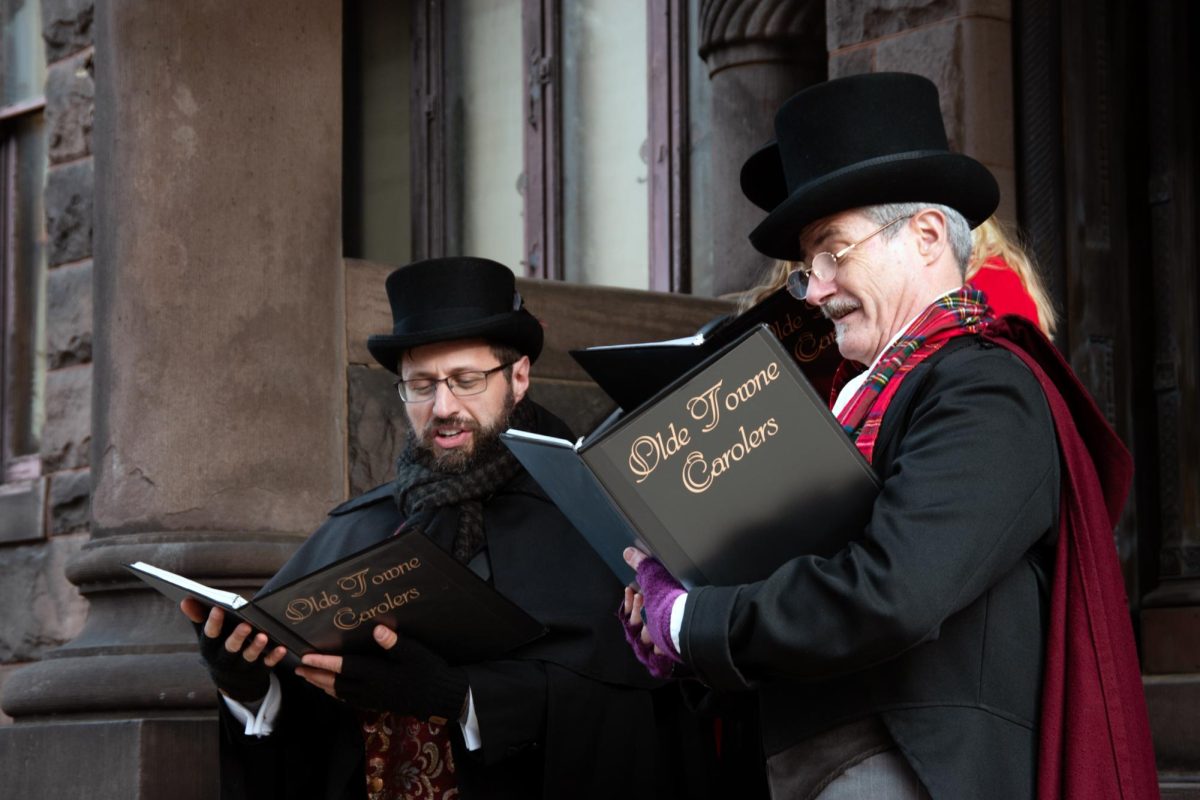The GroW Community Garden is home to all sorts of colors — greens from the shrubbery and rosemary sprouting out of the ground, sky blue plastered on the mural behind it and soon-to-be white “ghost” pumpkins, thanks to a new patch of gourds.
Colin Bohula, a senior majoring in political science and one of three garden managers, said the team plans to hold a pumpkin harvest for the first time this October, where students can buy pumpkins and carve them. The burgeoning pile of Halloween produce is part of the garden’s student managers’ efforts to invigorate student involvement with the student-run plots, alongside stone and brick painting events.
Bohula said while this isn’t the first time GroW has cultivated pumpkins, it’s been “a while” since they have.
“My goal is, really, I want to have the pumpkin harvest,” he said. “I’m from Illinois, and the actual county I’m from is the pumpkin capital.”
Bohula said busting out the scoops and knives for pumpkin carving isn’t the only way GroW is expanding its reach at GW. He said he is planning a brick labeling event, where students come to the garden and paint labels for the various garden plants onto bricks, which currently sit in a pile near the cucumbers.
“We’re going to have an event where basically you just come out and paint a brick, so we can actually get everything labeled, look nice and pretty,” he said.
Rows of pumpkins, tomatoes and peppers grow in carefully tended rows that stretch across the garden space, planted squarely in urbanity just steps away from Amsterdam Hall, standing out amongst the sea of tan brick structures dominating the background.

The produce that sprout up at the GroW Garden are donated to Miriam’s Kitchen, a D.C.-based nonprofit working to end chronic homelessness.
Bohula said there weren’t any volunteers around to help with weeding and planting over the summer, meaning the two garden managers who were in the District had to get their hands dirty constantly just to keep GroW Garden functional. He said volunteers back in town are deployed to handle the summer weed overgrowth while he and his fellow garden managers focus on making the garden “prettier.”
He said winter can be a challenging time to maintain engagement with GroW because not a lot of plants tend to blossom amid frosty temperatures, so these events and changes are intended to help draw people in, even when watermelons can’t blossom. Bohula said he also hopes that the less outdoor-intensive garden activities help draw in some people who aren’t naturally farmers.
“I just started gardening, basically was like, ‘Hey, I like gardening,’” he said. “I like doing this. I could use some leadership skills. So yeah, that’s why I’m here.”
Bohula said he first got involved with the GroW Garden during the fall of his junior year because of his childhood experiences helping his grandfather with gardening tasks like pulling weeds and sodding dirt in his backyard. He said working at the garden felt like a natural fit as a result.
“I started volunteering at the garden here, I think fall of my junior year and then kind of just volunteered in the fall, got to know the garden, really enjoyed the garden,” he said.
Garden manager Elizabeth Hajosy, a sophomore majoring in international affairs and Spanish, said the garden isn’t just laying a new painted brick here and there — they’re putting together an entire space full of painted stones. She said she stumbled across a large pile of rocks within the garden, which she has been cleaning in preparation for a “fairy garden,” an area within the garden’s fences with fairy-like decor and set with colorful painted stones, creating a walking path for visitors.
“I want to organize a day for people to come in the garden and help me paint the stones bright colors,” Hajosy said.
Hajosy said some of the community’s interactions with GroW aren’t quite as positive. Hajosy said the garden had a “beautiful” pumpkin growing — until someone stole it. She said the thief’s heist was entirely “nonsensical” since the pumpkin has little practical use, being grown mostly for aesthetic value and not flavor.
“You can’t cook with it,” she said. “You can’t eat it.”
She said great pumpkin capers aren’t the only gourd-adjacent problems she has encountered. She said this year just as Halloween approaches, the garden’s pumpkins have been dying from “powdery mildew.” Hajosy said she dives into the weeds of gardening tips and tricks on Google to solve such dilemmas.
“We deal with that by just doing research, just a little Google search, and figuring out what we need to do to help them,” she said. “So for example, me and Colin are actually going to go later today to go get some sulfur containing fungicide. Hopefully that will help save the pumpkins.”








